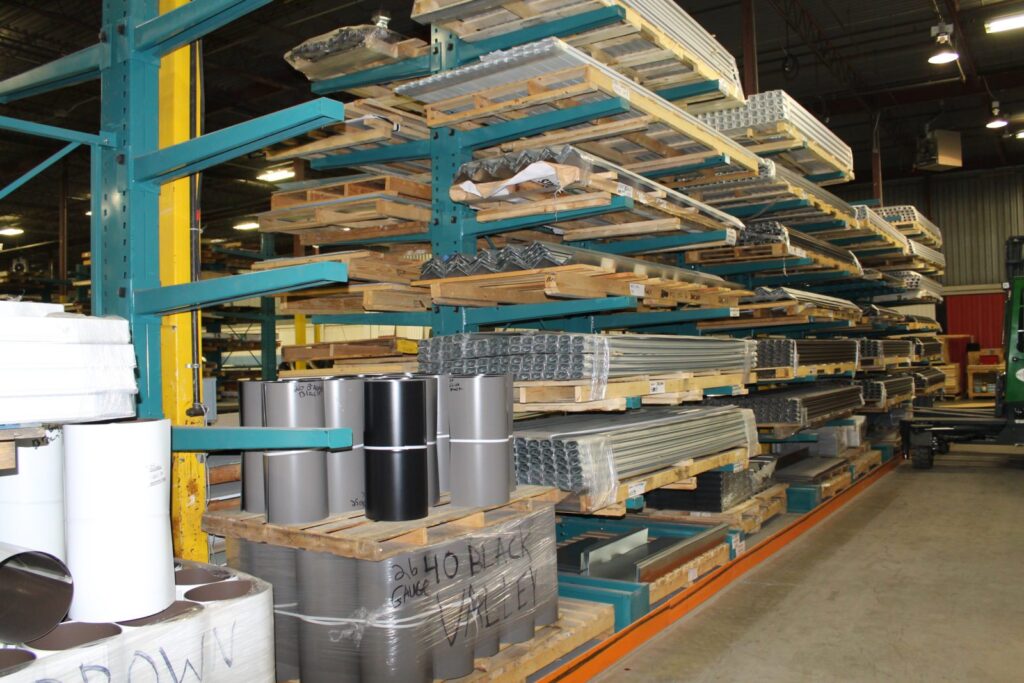Some materials don’t fit neatly or effectively into pallet racking systems. Lumber and steel, for example, are often too long and awkward to fit on pallets, and may not have squared edges. Materials such as these are best stored using cantilever racking.
Cantilever racking is a free standing storage system with horizontal arms extending out from a single vertical column. The system is ideal for storing long items in continuous runs in order to avoid left-to-right vertical uprights that interfere with the placement of the product on the shelves.
This type of racking is found in a wide variety of settings, such as lumber yards, hardware stores, plumbing supplies warehouses, and non-uniform products; such as furniture, building materials, sheet metal, heavy duty metals, pipe, bar stock, appliances, etc.


Advantages of Cantilever racking:
- No front access obstructions; making loading and unloading quick and simple.
- Easily adjusted to accommodate a wide variety of load heights.
- Able to support loads ranging in varieties of length
- Customizable in length, height, and width
- Designed to hold small to heavy-duty loads
- Single or double sided configuration
- Structural cantilever available for heavy duty applications
Types of Cantilever Racking:
Light-duty: Ideal for storing lighter materials such as piping, lumber, or flat-packed furniture. Great for retail backrooms or workshops.
Heavy-duty: Built for substantial weight capacity, often used in warehouses and yards to support large, bulky stock like steel beams or timber bundles.
Single-sided: Typically installed against walls to save floor space while still allowing easy front access.
Double-sided: Accessible from both sides, making them perfect for central aisle placement and maximizing storage density.
Roof-covered: Some systems include overhead protection to shield inventory from rain and UV damage—especially useful for outdoor storage setups.
Anchorable: Designed to be securely fastened to the ground for added stability, especially in high-traffic or seismic zones.


